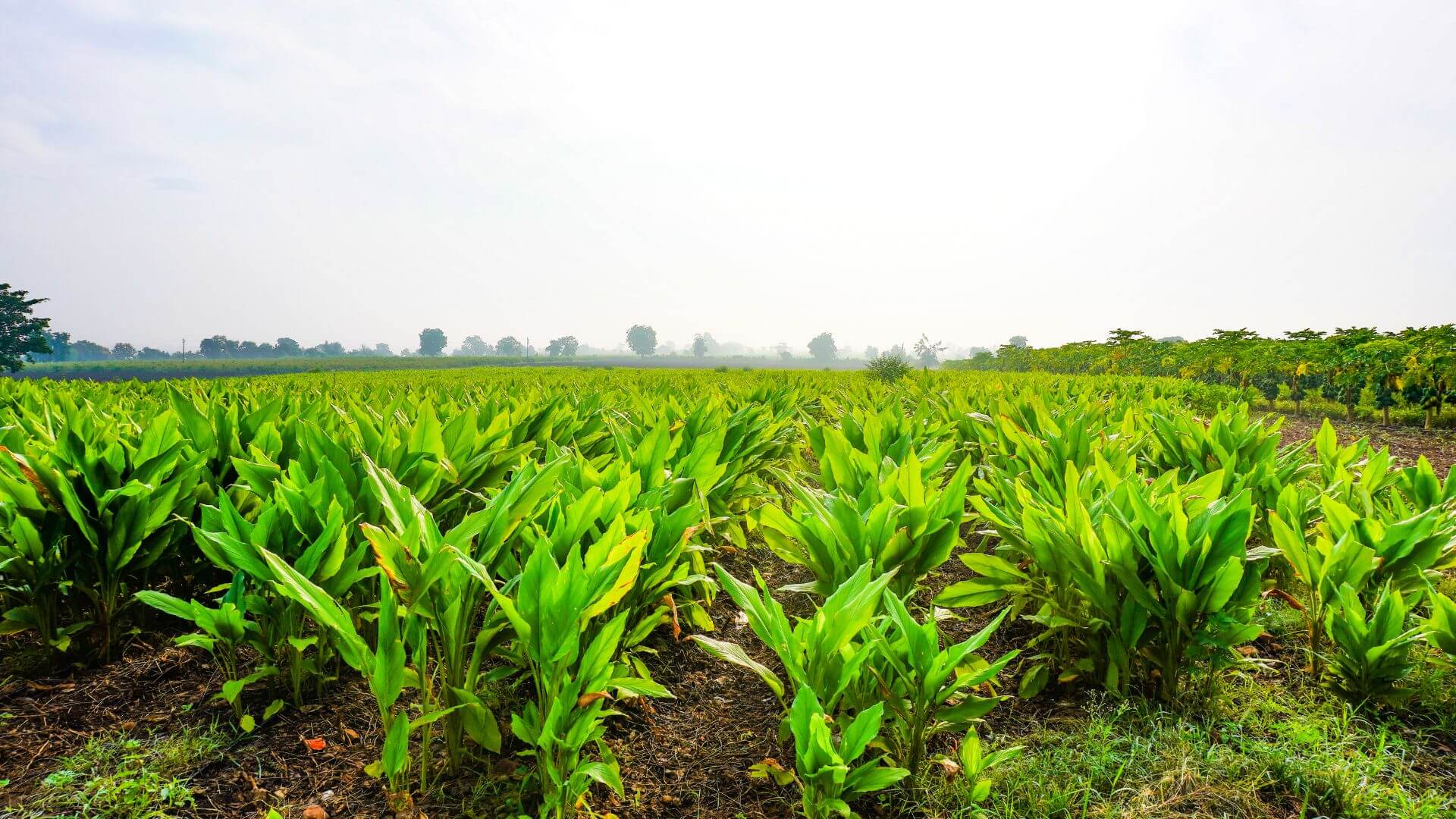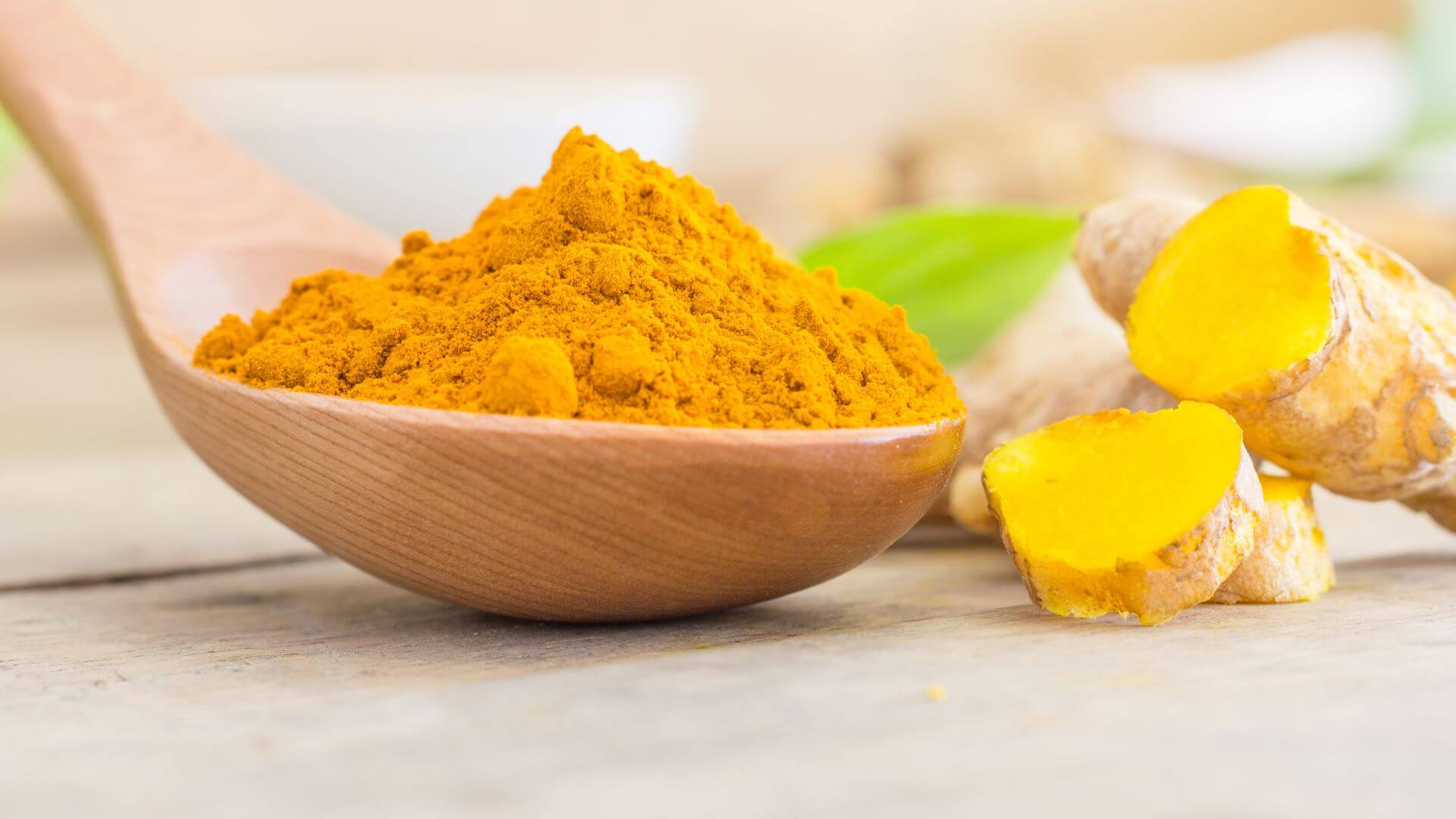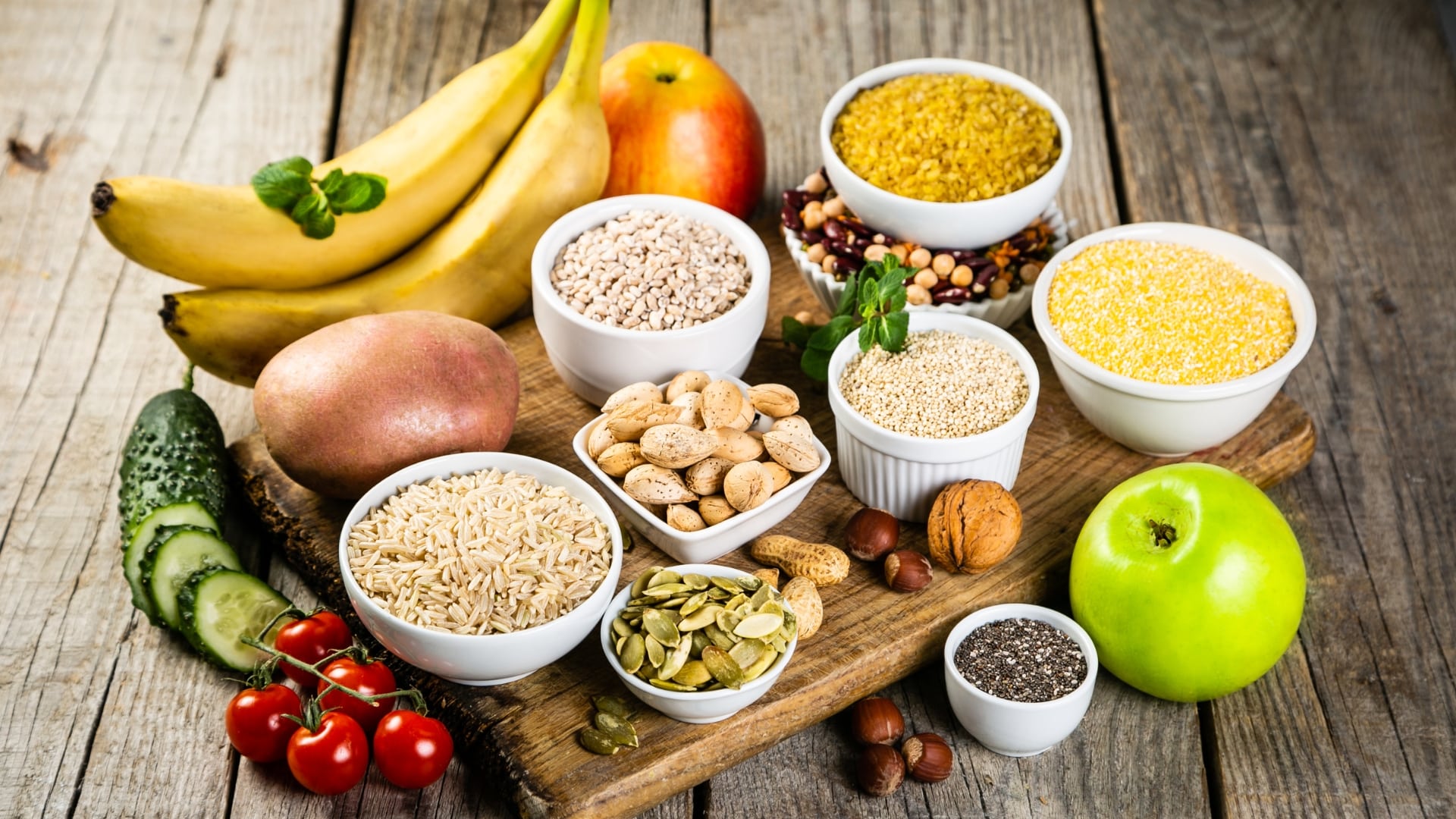Turmeric powder comes from the turmeric plant, scientifically known as Curcuma longa. It’s a perennial herb belonging to the ginger family.

Turmeric, a golden spice celebrated for its vibrant hue and health benefits, has been a staple in culinary and medicinal traditions across various cultures, particularly in Asia. The journey of turmeric powder from plant to pantry is both fascinating and intricate.
So, what is the process of making turmeric powder? The process involves several steps. From cultivation, harvesting, boiling and drying. Let’s discuss these steps:
To get organic Turmeric Powder delivered to you quickly, check this link.
- The Process of Making Turmeric Powder
- The Culinary and Medicinal Uses Of Turmeric Powder
- The Environmental and Economic Impact of Turmeric Powder
- Turmeric Powder FAQs
- Turmeric Powder Around the World
- Article Summary
- Recommended Turmeric Powder Products
Table of Content in this Article
The Process of Making Turmeric Powder
- Cultivation: Turmeric is primarily cultivated in tropical regions, with India being the largest producer. The plant requires a considerable amount of rainfall and a temperature range between 20°C and 30°C.
- Harvesting: The plant takes about 8 to 10 months to mature. The rhizomes, which are the underground stems, are harvested when the leaves and stem start to turn brown and dry.
- Boiling: The rhizomes are cleaned and then boiled. Boiling ensures that the raw flavor of turmeric is removed and also sterilizes the rhizomes.
- Drying: After boiling, the rhizomes are dried. This can be done under the sun or using a drying machine. The drying process can take several days, and it’s crucial to ensure that the rhizomes are completely dry.
- Grinding: The dried rhizomes are then ground into a fine powder. This powder is what we commonly use as turmeric powder in cooking and for other purposes.

Turmeric powder is known for its vibrant yellow color and is widely used in cooking, particularly in Indian and Southeast Asian cuisine. It’s also renowned for its medicinal properties, being a rich source of curcumin, which has anti-inflammatory and antioxidant properties.
The Culinary and Medicinal Uses Of Turmeric Powder
Turmeric powder is renowned for its warm, bitter taste and a mustard-like aroma. It’s a key ingredient in curries and many other Asian dishes. Beyond its culinary use, turmeric has a long history in traditional medicine.
The compound curcumin, found in turmeric, is credited with anti-inflammatory and antioxidant properties. This has led to its widespread use in herbal remedies, supplements, and even cosmetic products.

The Environmental and Economic Impact of Turmeric Powder
The cultivation and processing of turmeric have significant economic implications, particularly in regions where it’s grown extensively. For farmers, turmeric cultivation can be a sustainable crop choice, as it’s in high demand globally. However, as with any agricultural product, challenges such as climate change, pests, and market fluctuations can impact production and livelihoods.
- You may be interested in reading about Ginger Roots. Check our ginger root articles here. Also, check our November 2023 edition of Plant-based Protein Sources Infographic.

Turmeric Powder FAQs
In this FAQ section on Turmeric Powder, we delve into the most common questions and intriguing inquiries about this vibrant spice that has captivated culinary and health enthusiasts worldwide.

Whether you’re a seasoned chef, a health-conscious individual, or simply curious about this golden spice, our FAQs are designed to provide you with a deeper understanding of turmeric powder’s origins, uses, benefits, and much more. Explore these insights to discover the myriad ways turmeric powder can enhance your cooking, health, and overall wellbeing.
-
1. What is turmeric powder made from?
Turmeric powder is made from the dried and ground rhizomes of the Curcuma longa plant, a member of the ginger family.
-
2.How is turmeric powder traditionally used in cooking?
It’s commonly used in Indian and Southeast Asian cuisine, especially in curries, to add color and flavor. It’s also used in mustards, butters, and cheeses.
-
3. Can turmeric powder be used for skin care?
Yes, turmeric is known for its anti-inflammatory and antioxidant properties and is used in various skin care products and homemade face masks.
-
4. What are the health benefits of turmeric powder?
Turmeric contains curcumin, which is believed to have anti-inflammatory, antioxidant, and possibly even anticancer properties.
-
5. How does turmeric powder differ from fresh turmeric?
Fresh turmeric has a more intense flavor and is less convenient than the powdered form. Powdered turmeric is more commonly used in cooking due to its longer shelf life and ease of use.
(Ad) Greens Blend Superfood: Super Greens Powder Smoothie Mix for Boost Energy. Get Yours Now! -
6. Can turmeric powder stain skin or surfaces?
Yes, its vibrant yellow color can stain skin and surfaces. Care should be taken when handling it.
-
7. Is turmeric powder safe for everyone?
While generally safe, turmeric can interact with certain medications and conditions. It’s advisable to consult a healthcare provider before starting any new dietary supplement.
-
8. How much turmeric powder should I use in cooking?
This varies by recipe, but a general guideline is ½ to 1 teaspoon for a pot of curry or soup.
-
9. Does turmeric powder lose its potency over time?
Yes, like most spices, it can lose potency. It’s best used within 6 months to a year, stored in a cool, dark place.
-
10. Can turmeric powder help with digestive issues?
Some studies suggest that it may help with digestion and reduce symptoms of bloating and gas due to its anti-inflammatory properties.
-
11. Is there a recommended daily intake for turmeric powder?
There’s no official recommended daily intake, but moderate use in cooking is generally considered safe. For medicinal purposes, it’s best to consult a healthcare professional.
-
12. Can turmeric powder be used in beverages?
Yes, it’s a key ingredient in “golden milk” and can be added to smoothies and teas.
-
13. How do I store turmeric powder?
Store it in an airtight container, away from direct sunlight and heat, to maintain its potency.
-
14. Can I make turmeric powder at home?
Yes, by boiling, drying, and grinding fresh turmeric rhizomes, although it’s labor-intensive.
-
15. Are there any side effects of consuming turmeric powder?
In large amounts, it can cause stomach upset, nausea, or dizziness. It’s important to use it moderately.
-
16. Can turmeric powder be used for weight loss?
Some studies suggest turmeric can aid in weight loss due to its anti-inflammatory properties, but more research is needed.
-
17. Does turmeric powder have anti-aging properties?
Due to its antioxidant properties, turmeric is believed to have anti-aging benefits, both in diet and skincare.
-
18. Can I use turmeric powder in baking?
Yes, it can be used to add color and a mild flavor to baked goods.
-
19. Is organic turmeric powder better than non-organic?
Organic turmeric powder is free from pesticides and often considered higher quality, but both types offer the same health benefits.
-
20. How does turmeric powder compare to curcumin supplements?
Turmeric powder contains about 3% curcumin, while supplements are concentrated forms. Supplements are often used for specific health purposes.

Turmeric Powder Around the World
Turmeric powder is common in several regions of the world. In these regions, turmeric is not just a culinary ingredient; it’s also valued for its cultural and medicinal significance, playing a role in traditional remedies and religious ceremonies. Its popularity continues to grow globally as more people become aware of its health benefits and culinary versatility.
The key areas where Turmaric is widely used and recognized include:
-
South Asia
Particularly in India, which is the largest producer and consumer of turmeric in the world. Turmeric is a staple in Indian cuisine, used in curries, dals, and many other dishes. It’s also an integral part of Ayurvedic medicine.
-
Southeast Asia
Countries like Indonesia, Malaysia, and Thailand use turmeric extensively in their cuisine. It’s used in traditional dishes like Indonesian rendang, Malaysian laksa, and Thai curries.
-
Middle East
In Middle Eastern cuisine, turmeric is used for its flavor and as a coloring agent in dishes like rice, meat, and soups.
-
North Africa
In North African countries, such as Morocco, turmeric is used in spice blends like ras el hanout and in various savory dishes.
-
Western Countries
In recent years, there’s been a growing interest in turmeric in the West, particularly for its health benefits. It’s used in various forms, from cooking spices to dietary supplements.
-
Caribbean
Turmeric is also used in Caribbean cuisines, often in spice blends and in dishes influenced by Indian cooking.
In Summary
The journey of turmeric from a rhizome in the soil to a fine powder in our kitchens is a blend of traditional practices and modern techniques. This golden spice, deeply rooted in history and culture, continues to be an essential ingredient in cuisines and a subject of interest in health and wellness circles. Its story is not just about a spice but also about the communities and cultures where it is grown and cherished.
The remarkable benefits of turmeric powder are too significant to overlook. From enhancing your favorite recipes with its warm, earthy flavor to harnessing its potential health benefits, turmeric is a versatile and essential spice for every kitchen.
Recommended Turmeric Powder Products
If you’re inspired to incorporate this golden spice into your daily routine, explore a carefully curated selection of the best turmeric powder products on Amazon from the link below.
Discover the best turmeric powders on Amazon today and begin your journey towards wellness and flavor-packed cooking.





